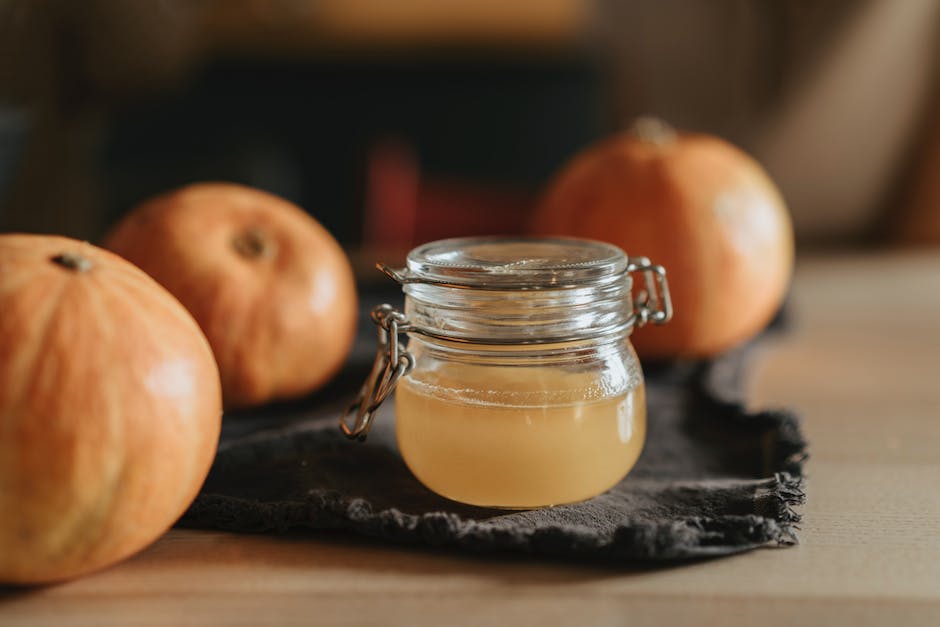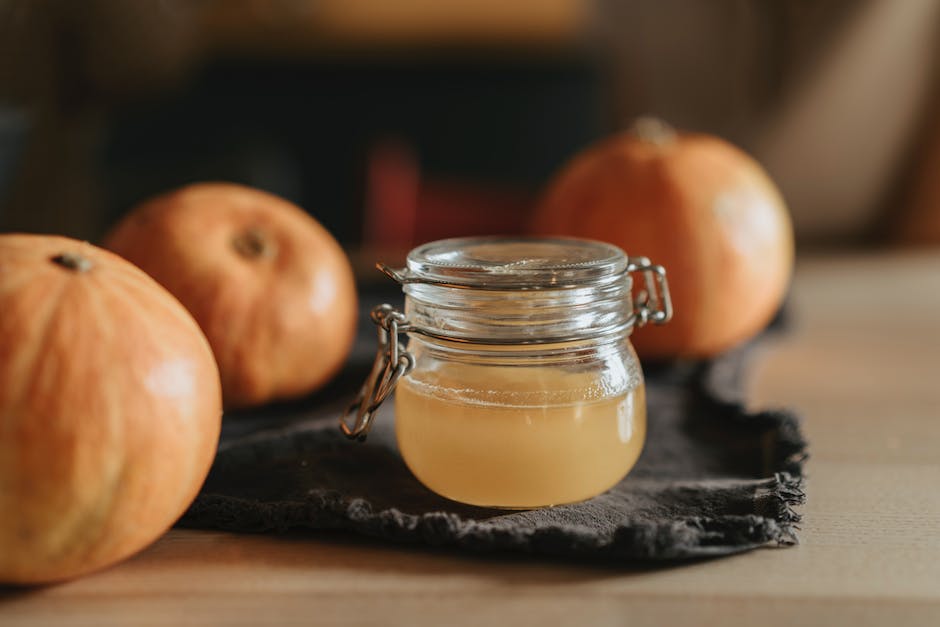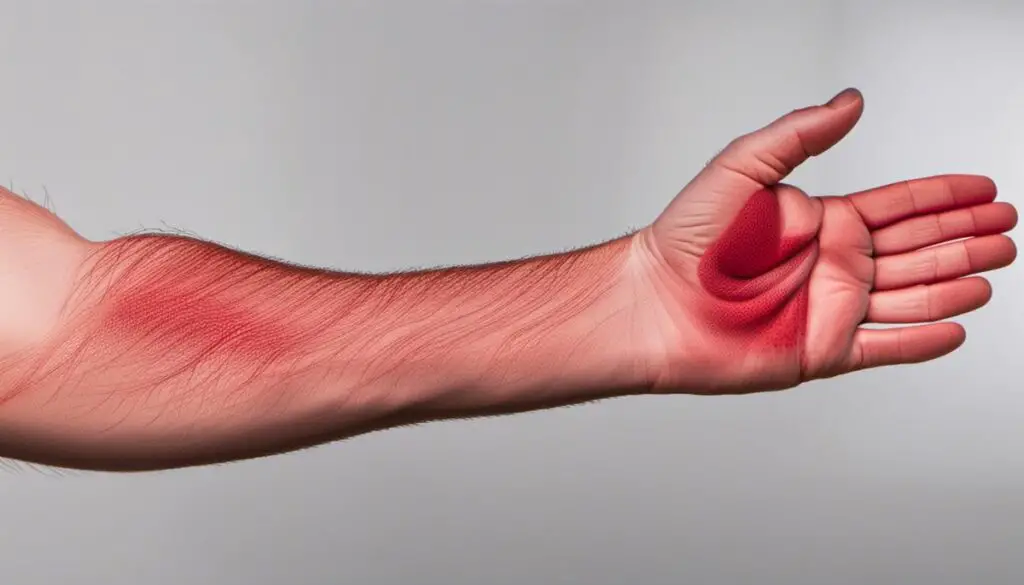Skin rashes can prove to be more than just a minor inconvenience. The discomfort, itching, and often the appearance can detract from your overall quality of life. In pursuit of relief, many individuals have turned to natural remedies over man-made concoctions for treatment. Among these natural remedies, apple cider vinegar, a simple but multifaceted item sitting in your pantry, has proven to have significant benefits. This paper focuses on comprehensive explanations about skin rashes and apple cider vinegar, the remarkable connection between the two, and practical guides on how to use this ingredient effectively in combating skin irritations.
Understanding Skin Rashes
Understanding Skin Rashes
A skin rash is a symptom that causes a noticeable change in the texture or color of the skin. They can appear as red patches, bumps, blotches, or blisters, and can cover a small area on the body or widespread. Depending on the type, skin rashes might be itchy, painful, uncomfortable or even unnoticed.
Types of Skin Rashes
There are various types of skin rashes, each with a distinct appearance and cause. For instance, eczema is a chronic and inflammatory skin disorder that features itchy, red, and scaly patches. Psoriasis, another chronic disease, exhibits thickened, red plaques covered with white scales. Contact dermatitis emerges when the skin reacts to direct contact with certain substances, while hives illustrate an allergic response resulting in itchy welts.
Causes of Skin Rashes
Skin rashes can be triggered by various causes, including infections, allergies, extreme weather conditions, stress, medications, and underlying health conditions. Some rashes might be hereditary, while others may result from contact with certain plants or substances, like poison ivy or certain chemicals. Food allergies, insect bites, or certain illnesses such as chickenpox or measles can also cause skin rashes. Moreover, some rashes are a manifestation of autoimmune disorders, such as lupus or rheumatoid arthritis.
Intensity of Skin Rashes
The intensity or severity of skin rashes can fluctuate significantly. Some might be mild and barely noticeable, while others can be severe or even life-threatening. For example, a mild rash could be localized to a small area and vanish on its own without treatment. However, a severe rash could cover a large area or the entire body, cause discomfort or pain, and potentially signal a life-threatening situation, especially if it is accompanied by other symptoms such as fever or difficulty breathing.
Advantages of Apple Cider Vinegar for Skin Rashes
Apple cider vinegar (ACV) has been hailed in traditional and natural medicine for its plethora of health benefits, one of which includes treatment of skin conditions such as rashes. The main component of ACV, acetic acid, showcases antiseptic, anti-inflammatory, and antimicrobial properties, which can help ease the discomfort of a rash and speed up the healing process. Furthermore, the pectin, vitamins B1, B2, and B6, and biotin found in ACV work together to nourish the skin while simultaneously lessening inflammation.
Understanding the Application of Apple Cider Vinegar for Skin Rashes
Apple cider vinegar (ACV) is commonly used as a natural remedy for treating skin rashes. To do so, it is critical to dilute ACV with an equal amount of water before applying it to the irritated area of your skin. This is because pure vinegar can be quite harsh on the skin. The diluted mixture can be gently applied using a cotton ball, then left on for a few minutes before being rinsed off with warm water. This treatment can be done two to three times daily until the rash begins to show improvements.
Keep in mind that it’s always a good idea to perform a patch test before applying the ACV mixture to larger areas of your skin, as some people may experience an adverse reaction to it. If the rash worsens or doesn’t improve within several days of using this ACV treatment, it would be wise to seek advice from a healthcare professional.

Photo by the_change_designer on Unsplash
Introduction to Apple Cider Vinegar
A Closer Look at Apple Cider Vinegar (ACV)
It may interest you to know that Apple cider vinegar (ACV), this common household ingredient used to soothe skin rashes, is actually derived from fermented apple juice. The production process begins by crushing apples and extracting their juice. This juice is then mixed with bacteria and yeast, which initiates a fermentation process that transforms the sugars within the juice into alcohol. In the subsequent phase, the alcohol undergoes another fermentation, this time by acetic acid-forming bacteria, which ultimately produces vinegar. The resulting product, Apple cider vinegar, gets its characteristic sour flavour from the acetic and malic acids produced during these fermentation processes.
Uses of ACV
ACV has an array of general uses that span culinary uses, household cleaning, and health remedies. Its culinary applications include its use in salad dressings, marinades, pickles, and even some baking recipes. As a household cleaner, it has the power to disinfect, deodorize, and clean various home surfaces. When it comes to health remedies, ACV is fortified with properties that support weight loss, skincare, hair care, digestive health, and control blood sugar levels.
Chemical components
Apple cider vinegar contains several chemical components that contribute to its health advantages. These include acetic acid, minerals like potassium and magnesium, vitamins, enzymes, and antioxidant polyphenols. It’s rich in acetic acid, which provides anti-bacterial and anti-fungal properties. Potassium assists in the transport of nutrients and waste products among various body cells. Vitamins and enzymes present in ACV act as catalysts for body functions, while antioxidant polyphenols help reduce damage caused by free radicals.
Apple cider vinegar for skin rashes
Specifically in relation to apple cider vinegar skin rashes, apple cider vinegar is popularly believed to relieve itching and inflammation owing to its acetic acid content. The acid is known for its anti-inflammatory and anti-bacterial properties which can help soothe the rash. It’s also known to balance the pH of the skin, which further aids in healing the skin. However, undiluted ACV can cause a sting or burn when applied to the skin as the acid is very strong. Therefore, if someone decides to use ACV on a skin rash, it’s recommended that they dilute it with water before application.
Understanding the Science and Precautions Associated with Apple Cider Vinegar
While limited studies are available supporting the use of apple cider vinegar in alleviating skin rashes, a substantial amount of authentic scientific research is still required. Despite the need for additional studies, the proven track record of apple cider vinegar as a home remedy has led to its widespread incorporation in skincare routines. Prior to applying any new product to the skin, it is suggested to perform a patch test to prevent adverse reactions. In instances of severe or continuous skin rashes, seeking immediate professional medical advice is paramount.

Apple Cider Vinegar for Skin Health
Apple Cider Vinegar’s Effect on Skin Health
Apple cider vinegar has increased in popularity within the health and wellness community due to its rich content of organic compounds, offering noticeable skin benefits. It is fundamentally composed of acetic, citric, lactic, and succinic acids. These elements are promoted in the scientific literature for their beneficial effects on skin health.
Skin Health and Apple Cider Vinegar
Research shows that apple cider vinegar demonstrates antibacterial properties that can help manage common skin infections. Its acetic acid can target skin bacteria, combat dermatological disorders, and also prevent inflammation and infections which lead to skin rashes. The dynamic substance is also known for balancing skin pH, which results in the reduction of excessive oil production, hence preventing acne formation and potential skin rashes linked to sebum buildup.
Apple Cinder Vinegar and Skin Rashes
Skin rashes often result from contact dermatitis, an allergic reaction, bacterial, or fungal infections. By applying diluted apple cider vinegar to the skin, its inherent antibacterial, anti-fungal, and anti-allergic properties can alleviate these conditions, promoting speedier healing. The vinegar improves the skin’s barrier function by restoring its pH levels, reducing the likelihood of future irritations.
Scientific Evidence
A study published in the Journal of Advanced Research cited that lactic and citric acid, both constituents in apple cider vinegar, could suppress the growth of Propionibacterium acnes—a bacterium linked to acne development. Indirectly, such suppression would mitigate threats of acne-induced rashes. In another research, the Journal of Dermatology found that atopic dermatitis (AD) patients who bathed with diluted apple cider vinegar saw improvements in their skin barrier. Decreasing dermatitis involves reducing its symptoms, skin rashes being a primary contributor.
Usage
To utilize apple cider vinegar’s skin benefits, it’s crucial to apply it in moderation as its high acidity might cause skin irritation and dryness. Dilute a few tablespoons of apple cider vinegar with water, then apply the mixture to the skin using a cotton ball. For a whole-body treatment, adding a cup of apple cider vinegar to a warm bath can help soothe skin rashes as well.
Cautionary Measures
While apple cider vinegar (ACV) is popular for its health benefits, one must proceed with caution. The skin’s reaction to different substances varies from person to person. Thus, it’s recommended to perform a patch test or even consult with a dermatologist before using ACV in your skincare regimen. Though ACV has numerous beneficial attributes, it should not replace any prescribed treatments for severe skin conditions.

Apple Cider Vinegar and Skin Rashes
The Healing Potential of Apple Cider Vinegar on Skin Rashes
Moving onto the specifics of its applications, Apple cider vinegar, also known as ACV, is celebrated for its extensive health benefits. It’s especially notable for possibly treating skin rashes. This multi-purpose vinegar is packed with acetic acid and minor quantities of other acids such as lactic, citric, and malic. Coupled with probiotics, enzymes, and amino acids, ACV becomes a powerful antimicrobial and anti-inflammatory agent.
Properties of ACV and Skin Rashes
Apple cider vinegar holds noteworthy anti-inflammatory and antimicrobial properties which can aid in treating skin rashes. The acetic acid in ACV can help fight off bacteria or fungi causing skin irritation, while its anti-inflammatory properties can help soothe inflamed skin. Moreover, ACV’s pH-balancing abilities can be beneficial in maintaining skin’s optimal pH balance, essential for its overall health.
ACV as a Preventive Measure
Using apple cider vinegar as a preventative measure against skin rashes is a practice often seen in home remedies. Dilution is crucial in this aspect as direct application can lead to further irritation due to its acidic nature. A diluted ACV wash can help cleanse the skin, preventing the onset of rash-causing bacteria or fungi. Furthermore, it can help reinstate the skin’s natural acidic mantle, boosting its defense against irritants.
ACV as a Skin Rash Remedy
Apple cider vinegar can provide symptom relief for existing skin rashes. The application often involves a diluted ACV solution for topical application. This can aid in relieving itching, reducing inflammation, and combating the infection with its antimicrobial properties. However, always perform a patch test before applying over a larger area to avoid skin irritation or burns due to the vinegar’s acid content.
Studies on ACV and Skin Health
Scientific studies supporting the use of apple cider vinegar in treating skin rashes are limited. Nevertheless, a laboratory study published in the Journal of Advanced Research in 2018 showed that apple cider vinegar displayed antimicrobial activity against Escherichia coli, Staphylococcus aureus, and Candida albicans. The latter two often implicated in various skin infections.
Anecdotal Evidence
Despite the lack of extensive scientific studies, there is considerable anecdotal evidence supporting the benefits of apple cider vinegar. Many individuals who have tried ACV for skin rashes reported positive results. The rashes were either greatly diminished or entirely gone after a few days of ACV application. However, as with any home remedy, results may vary from person to person.
Consultation with Healthcare Professionals
While apple cider vinegar may serve as a viable option for the prevention or treatment of skin rashes, it is always imperative to consult with a healthcare professional before trying it out. This will ensure safe application and prevent any potential unforeseen negative reactions due to ACV’s high acidity or potential allergenicity. It is also important to seek immediate professional help for severe or ongoing skin rashes.
In Summary
Though further investigation is necessary to definitively confirm the efficacy of Apple Cider Vinegar (ACV) in the treatment of skin rashes, its known anti-inflammatory and antimicrobial properties, along with a wealth of personal testimonies, suggest it may be a valuable home remedy to consider.

Practical Guide on How to Use Apple Cider Vinegar for Skin Rash Treatment
Exploring Apple Cider Vinegar’s Potential Impact on Skin Rashes
ACV has been celebrated for its variety of health benefits, which are thought to include soothing skin irritation and rashes. Skin rashes, typically identified by itchiness, redness, and general discomfort, can result from multiple causes such as allergies, inflammation, diseases, or contact with irritants.
How Apple Cider Vinegar Can Help
ACV is acetic acid made from fermented apples that may offer several benefits when it comes to skin health. It has antimicrobial properties that may help to fight off bacteria and fungi on the skin, which can be beneficial in the treatment of rashes. ACV also contains acetic acid, providing it with mild exfoliating properties that can help to balance the skin’s pH levels and reduce inflammation.
Methods to Use Apple Cider Vinegar for Skin Rashes
There are a few different ways to use ACV for skin rashes. It can be applied directly to the rash, used as a bath soak, or consumed orally.
- For direct application, it is recommended to dilute ACV with water in a 1:1 ratio before applying to avoid skin burns. Use a cotton ball to dab the mixture onto the affected area. Leave it on for 15 minutes and then rinse off with cool water, followed by applying a hypoallergenic moisturizer.
- For a bath soak, add two cups of ACV to a warm bath and soak for 15 to 20 minutes.
- If you choose to ingest ACV, mix one to two tablespoons with eight ounces of water. It can be taken up to three times a day.
Usage Precautions and Side Effects
When using ACV for skin rashes, it is vital to be aware of potential side effects and precautions. Overuse or undiluted ACV could lead to burns and worsen the rash. If you have sensitive skin or known allergies to vinegar or acetates, it’s advisable to avoid ACV treatments.
Common side effects may include stinging or a burning feeling. If any of these occur, wash the area thoroughly and stop using ACV.
Dealing with Adverse Reactions
If you experience an adverse reaction to ACV, it is imperative to discontinue use immediately. Rinsing the affected area with cool water can help soothe irritation. If the rash worsens or a burning sensation continues, you should seek medical attention as soon as possible.

The power of nature has consistently proven to be effective in tackling many health and cosmetic issues, skin rashes included. Apple cider vinegar, though a common household item, is a potent solution overflowing with benefits for skin health and specifically in the management of skin rashes. With its anti-inflammatory and anti-bacterial properties, it offers hope to those seeking a more natural approach to skin health. However, like any substance, it must be used responsibly. This guide reveals its potential, but the need for personal discretion and careful usage cannot be overstressed. As more research unfolds, we look forward to unveiling even more ways apple cider vinegar can contribute to overall skin health.
